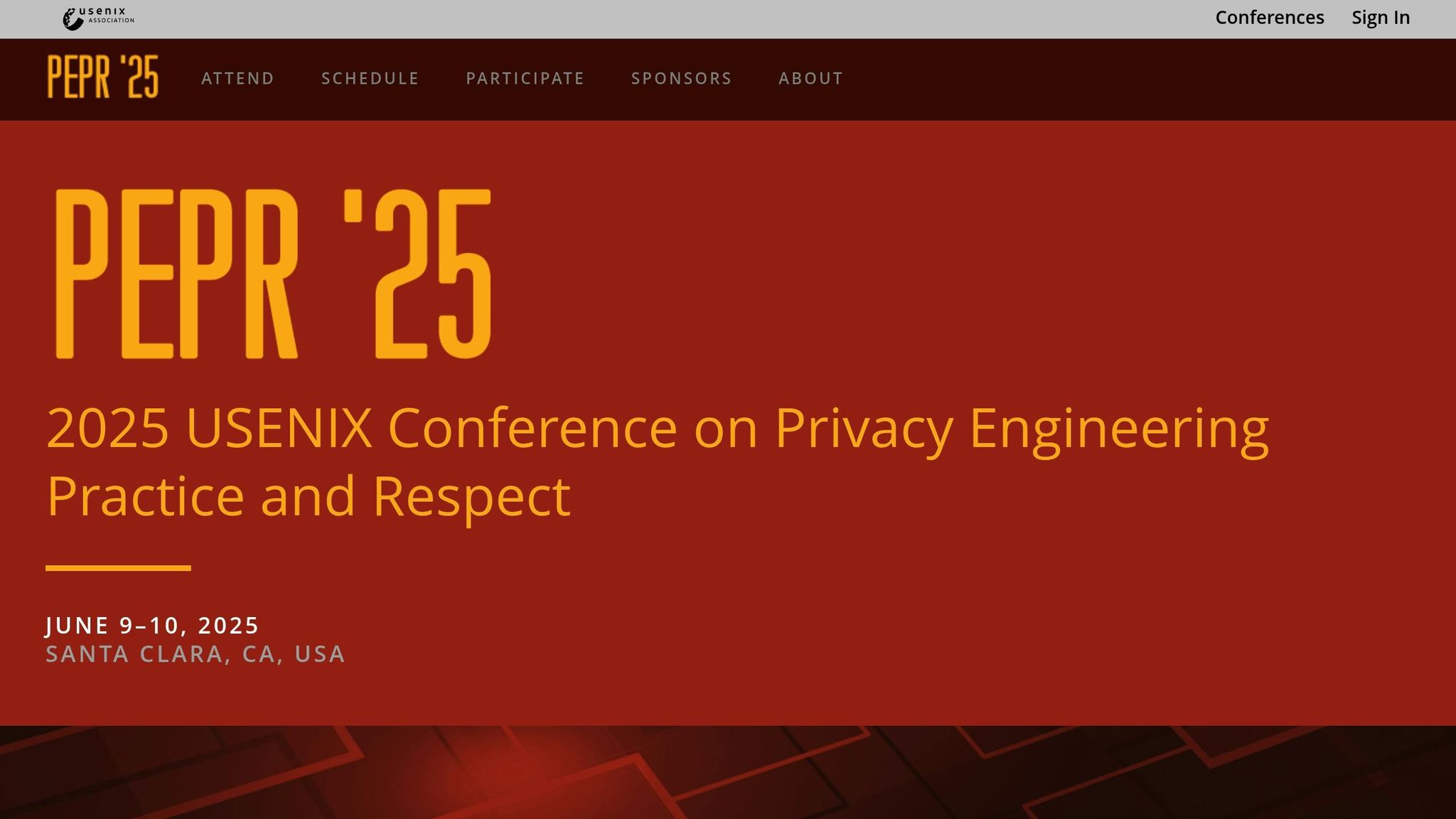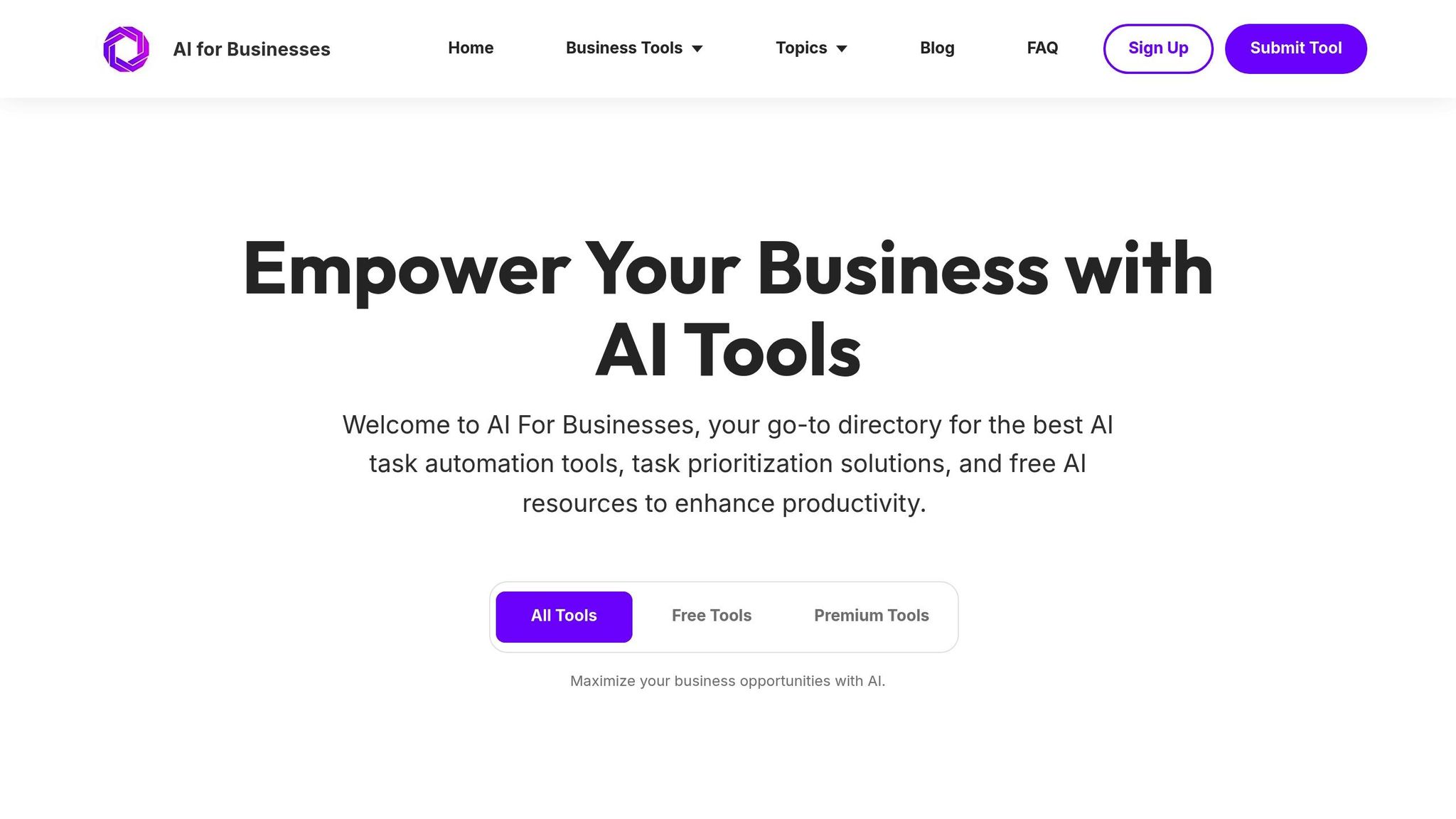- Increased Threats: In 2023, the U.S. saw over 3,200 data breaches, a 72% jump from 2021, with 43% targeting SMEs.
- Regulatory Pressure: By 2024-2025, 15 U.S. states will enforce stricter privacy laws, making compliance more challenging.
- Manual Systems Fail: Traditional security measures can't keep up - 90% of security footage goes unwatched, and manual processes often miss incidents.
- AI Solutions: Businesses are turning to AI tools like user behavior analytics, automated incident response platforms, and AI-enhanced SIEM systems to detect threats faster, meet compliance demands, and reduce financial risks.
Key Takeaways:
- AI tools help spot insider threats, respond to attacks instantly, and simplify compliance.
- Each tool has different strengths: behavior analytics for internal risks, incident response for external attacks, and SIEM for large-scale monitoring.
- Costs, setup complexity, and scalability vary, so businesses must choose tools that fit their needs and resources.
Why it matters: Privacy incidents can lead to financial losses, regulatory penalties, and damaged reputations. Investing in AI tools now can protect businesses from these risks while improving data security.
PEPR '25 - Remediating Systemic Privacy Incidents

Privacy Incident Detection Challenges for Businesses
For small and medium-sized enterprises (SMEs) and growing companies, safeguarding sensitive data has never been more critical. With the rise of sophisticated threats, stricter regulations, and outdated manual security systems, businesses face a tough road when it comes to detecting privacy incidents.
Complex Privacy Threats
Today's privacy threats go far beyond the occasional data breach. The digital age has ushered in sprawling data networks with intricate workflows, making it harder to pinpoint vulnerabilities. Adding to this complexity are insider threats - often disguised as routine activity. Employees with legitimate access can unintentionally or deliberately compromise data without raising any red flags in traditional security systems.
Consider this: in 2022, 44% of all privacy incidents involved paper. This statistic serves as a stark reminder that privacy risks aren't limited to digital systems; even physical documents can pose a threat. As threat patterns continue to morph, businesses often struggle to keep their detection methods up to speed.
U.S. Regulatory Requirements
In the United States, businesses must navigate a maze of state-specific privacy laws. Each jurisdiction has its own breach notification rules, complete with unique timelines and reporting criteria. For companies operating across multiple states, this patchwork of regulations can quickly become overwhelming.
Compliance isn't just about responding to incidents - it’s about meticulous documentation. Businesses are required to log every step of their response, from risk assessments to remediation efforts. Unfortunately, manual processes often fall short, failing to produce the detailed records regulators demand. And because most privacy incidents are accidental, companies must treat every single event with the same level of scrutiny, regardless of intent. Falling short on documentation can lead to hefty penalties, even if the company has taken corrective action.
Manual Security System Limitations
Relying on manual security systems in today’s fast-paced environment is like trying to catch a tidal wave with a bucket. The numbers speak for themselves: in 2022, there were 23,896 security incidents and 5,212 breaches. Human analysts simply can’t keep up with this flood of data.
Manual systems come with a host of challenges. For one, employees often struggle to identify what qualifies as a privacy incident. This can lead to unreported breaches or, conversely, false alarms. Without standardized processes across teams, gaps in detection are inevitable.
Time delays are another major issue. From the moment an incident occurs to when it’s discovered, contained, and reported, every delay increases the risk of a minor issue escalating into a major breach. This not only amplifies the potential damage but also heightens the risk of regulatory penalties.
Surveillance systems, too, fall short. Over 90% of security footage remains unwatched until after an incident. Instead of functioning as proactive tools, these systems often serve as evidence only after the damage is done. When incidents span multiple states, the challenge of manually assessing risks against varying regulations can lead to over-reporting or under-reporting. And legacy systems, with their lack of automation, only add to the burden. Without automated risk scoring, teams struggle to prioritize incidents and meet regulatory deadlines.
These challenges make it clear: businesses need advanced, automated solutions to detect privacy incidents quickly and accurately. It’s no longer a question of if, but when companies will adopt these tools to stay ahead of evolving threats.
AI Privacy Detection Case Studies
Case studies from real-world scenarios highlight how AI-powered privacy detection moves organizations from a reactive approach to a more proactive stance. These examples demonstrate how AI enhances threat detection, speeds up response times, and ensures compliance across various industries.
AI Insider Threat Detection
A regional mid-sized bank implemented an AI-driven user behavior analytics platform to monitor employee data access patterns. The system tracked activities like file access, login routines, and data transfers, flagging unusual behaviors such as accessing sensitive files outside regular working hours. This early warning system allowed the bank to investigate promptly, preventing a potential data breach that could have posed serious regulatory challenges.
Automated AI Incident Response
A national retail chain, operating across multiple time zones, struggled to maintain consistent security protocols for managing incidents. To address this, the company introduced an AI-powered incident response platform that integrated with its existing security tools. When the system detected malicious activity, it acted immediately - isolating affected systems, blocking suspicious network traffic, and initiating containment measures. For example, during a phishing-triggered compromise, the platform prevented malware from spreading, safeguarding customer payment data. This automated approach not only reduced response times but also ensured compliance with industry security standards.
AI-Enhanced SIEM Privacy Management
A cloud services provider, managing sensitive data for numerous business clients, faced the challenge of monitoring privacy incidents across multiple data centers while adhering to state regulations. With thousands of security events occurring daily, the provider deployed an AI-enhanced Security Information and Event Management (SIEM) system. Using machine learning, the system analyzed network logs, access controls, and user activities to pinpoint genuine threats. It identified a suspicious pattern of database queries from a third-party integration, prompting an investigation that uncovered unauthorized data access. This automated detection not only eased the workload for the security team but also simplified compliance reporting. It underscores the growing need for scalable, automated privacy solutions in today’s data-driven landscape.
sbb-itb-bec6a7e
AI Privacy Tools Comparison
Following our case studies, let’s dive into how these AI tools perform across key dimensions. This comparison helps businesses pinpoint the right solution for their unique needs. Each tool serves distinct purposes, as highlighted in our examples: user behavior analytics, automated incident response platforms, and AI-enhanced SIEM systems. Here's how they stack up in terms of operational impact, implementation, and more.
Operational Impact
- User Behavior Analytics: Ideal for spotting insider threats by monitoring employee activity. This approach excels at detecting unusual behavior patterns that could signal risks.
- Automated Incident Response Platforms: These tools shine in managing external attacks by isolating threats and blocking malicious traffic in real time.
- AI-Enhanced SIEM Systems: Designed for large, complex infrastructures, these systems provide a bird’s-eye view of threats across multiple sources, ensuring comprehensive security monitoring.
Implementation Complexity
- User Behavior Analytics: Easier to set up, requiring minimal technical expertise. It's a go-to for mid-sized organizations with limited IT resources.
- Automated Incident Response Platforms: These tools demand more integration but deliver fast results by significantly improving response times.
- AI-Enhanced SIEM Systems: Setup can be intensive, requiring specialized skills and ongoing management. However, the payoff is extensive threat visibility and compliance support.
Cost Considerations
Costs vary widely depending on the tool. Beyond the initial licensing fees, companies must account for training, maintenance, and upgrades. These factors can significantly influence the total cost of ownership.
AI Tools Comparison Table
| Tool/Approach | Key Features | Business Impact | Implementation Complexity | Limitations |
|---|---|---|---|---|
| User Behavior Analytics | Real-time monitoring, pattern recognition, anomaly detection | Early detection of insider threats, regulatory compliance, reduced investigation time | Low – minimal integration needed | Focused on internal threats; requires a behavioral baseline; privacy concerns arise |
| Automated Incident Response | Real-time threat containment, system isolation, traffic blocking, multi-tool integration | Faster incident response, consistent security protocols | Medium – requires integration | Initial setup can be complex; risk of false positives; depends on rule accuracy |
| AI-Enhanced SIEM | Machine learning analysis, multi-source data correlation, automated threat prioritization | Comprehensive visibility, scalable monitoring, easier compliance | High – extensive setup required | Resource-heavy; complex maintenance; needs ongoing tuning |
Scalability and Learning Curve
Scalability is a crucial factor as businesses expand. Each tool handles growth differently:
- User Behavior Analytics: Scales smoothly as the number of users increases, making it a reliable option for growing companies.
- Automated Incident Response: Can handle higher threat volumes but may require additional configuration to keep pace.
- AI-Enhanced SIEM Systems: Capable of processing vast amounts of data but demands more processing power and storage as scale increases.
When it comes to ease of use, behavior analytics platforms tend to show value quickly. In contrast, AI-enhanced SIEM systems often require a longer setup period to reach peak performance. Automated incident response platforms, on the other hand, integrate well with existing workflows, offering a balance between ease of use and advanced functionality.
AI for Businesses Privacy Detection Solutions

For small and medium-sized enterprises (SMEs) and scale-ups, finding effective AI privacy detection tools can feel like searching for a needle in a haystack. That’s where AI for Businesses comes in - a curated directory designed to simplify the process of discovering AI tools that can improve operations and meet specific business needs. Whether it’s automating repetitive tasks or addressing unique challenges, this platform takes a practical, business-first approach to help organizations find the right fit.
One standout feature is its focus on accessibility. Many SMEs operate without dedicated IT departments or large technical teams, so the directory includes tools with varying levels of complexity. This ensures businesses can choose solutions that align with their technical capabilities, making implementation more manageable.
Another plus? Transparent pricing. AI for Businesses offers three membership tiers to suit different budgets and requirements:
- Basic Plan: Free access to the directory.
- Pro Plan: $29 per month, which includes priority support.
- Enterprise Plan: Custom pricing with tailored solutions, dedicated support, and assistance with tool integration.
The directory also provides in-depth descriptions for each tool, making it easier for businesses to understand how the tools work and how they can be applied. With a strong focus on SMEs, tools like Looka, Rezi, Stability.ai, and Writesonic are carefully evaluated for their usability and relevance to smaller organizations. This thoughtful curation ensures that the tools featured are not just effective but also easy to adopt for businesses with limited resources.
Conclusion
The case studies highlight how AI-powered privacy incident detection has become a crucial part of modern business operations. Across various industries, companies are seeing real progress in speeding up threat detection, improving regulatory compliance, and boosting operational efficiency by adopting these advanced tools.
This shift is especially noticeable when dealing with complex threats that traditional security systems struggle to manage. AI tools shine by analyzing massive datasets in real-time, spotting patterns that human analysts might overlook, and addressing incidents in minutes rather than hours or days. With privacy regulations becoming stricter and penalties growing harsher, these capabilities are no longer optional - they’re essential. The evolving landscape of privacy challenges underscores the growing importance of AI in reshaping how businesses detect and respond to incidents.
But the challenge isn’t just about finding effective AI tools - it’s about finding solutions that align with both technical needs and budget constraints. Smaller organizations, in particular, often lack the resources of larger enterprises, making accessible and scalable tools all the more critical.
That’s where platforms like AI for Businesses come into play. Offering a three-tier directory tailored for growing companies, the platform provides options ranging from free basic access to enterprise-level custom solutions. With featured tools like Looka, Rezi, Stability.ai, and Writesonic, it focuses on delivering practical, results-driven AI solutions for businesses of all sizes.
As privacy laws continue to tighten across states and industries, investing in AI privacy detection tools now can help businesses stay ahead of compliance requirements while strengthening customer trust through reliable data protection. The case studies make one thing clear: choosing the right AI tools isn’t just about technology - it’s about transforming how your organization approaches privacy and gaining a competitive edge in the process.
FAQs
What are the costs and challenges of implementing AI tools for privacy incident detection?
AI tools for detecting privacy incidents offer a more budget-friendly and straightforward alternative to traditional methods. Research highlights that organizations leveraging AI can cut down breach detection and containment times by as much as 80 days, leading to an average savings of $1.9 million in costs related to breaches. These tools simplify operations by automating threat identification and response processes, making them especially useful for companies with limited cybersecurity teams or resources.
Although the initial setup can differ based on the complexity of the AI system and an organization’s existing infrastructure, most AI-powered solutions are built to be intuitive and adaptable. This scalability minimizes long-term operational hurdles. In essence, AI tools provide businesses with an efficient way to strengthen privacy safeguards while conserving resources.
What challenges do small and medium-sized businesses face when adopting AI tools for privacy incident detection?
Small and medium-sized businesses (SMBs) often face hurdles when it comes to using AI tools for privacy incident detection. One of the biggest challenges is the lack of resources and expertise needed to properly monitor these systems and stay in line with privacy laws like GDPR or CCPA. Tight budgets make it even harder to afford advanced tools or bring in experienced professionals.
On top of that, SMBs are often more vulnerable to cybersecurity threats, as AI-driven attacks can exploit weaknesses in their systems. The costs tied to implementing these tools - whether it's the initial investment or the ongoing upkeep - can be a major roadblock for smaller businesses aiming to strengthen their privacy protections.
How can AI tools help businesses comply with different privacy laws across U.S. states?
AI tools make navigating state-specific privacy laws much easier by automating critical tasks like data classification, breach detection, and reporting. These tools can process massive amounts of data in real-time, identifying potential violations of laws like the California Consumer Privacy Act (CCPA) or Virginia's Consumer Data Protection Act (CDPA).
On top of that, AI solutions can adjust to changes in regulations, helping businesses stay aligned with evolving legal requirements. By using AI, companies can minimize human error, save valuable time, and concentrate on managing risks more efficiently.


